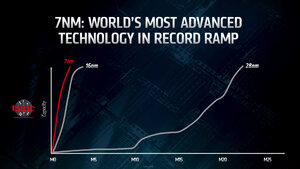IdiotInCharge
NVIDIA SHILL
- Joined
- Jun 13, 2003
- Messages
- 14,675
Well, it's more of the same from Intel. The price cut is nice, but you'd have to overclock the hell out of it and need the extra lanes and memory bandwidth for it to make sense over a 3950X. Or you'd have to have an existing X299 setup without a 7980XE or 9980XE processor already.
I think it makes the most sense where you need more lanes than LGA1151 or AM4 provide, need the best single-core performance you can get, and still need great multi-threaded performance.
I'm also surprised that AMD let Intel have this one. Had they built a TR version of the 3950X optimized for overclocking (or efficiency at stock) the 10980XE likely wouldn't have a leg to stand on.
[with respect to cooling, it's not like it's challenging or even expensive to toss a 280mm or 360mm AIO sandwich in any number of inexpensive enthusiasts chassis...]
![[H]ard|Forum](/styles/hardforum/xenforo/logo_dark.png)

